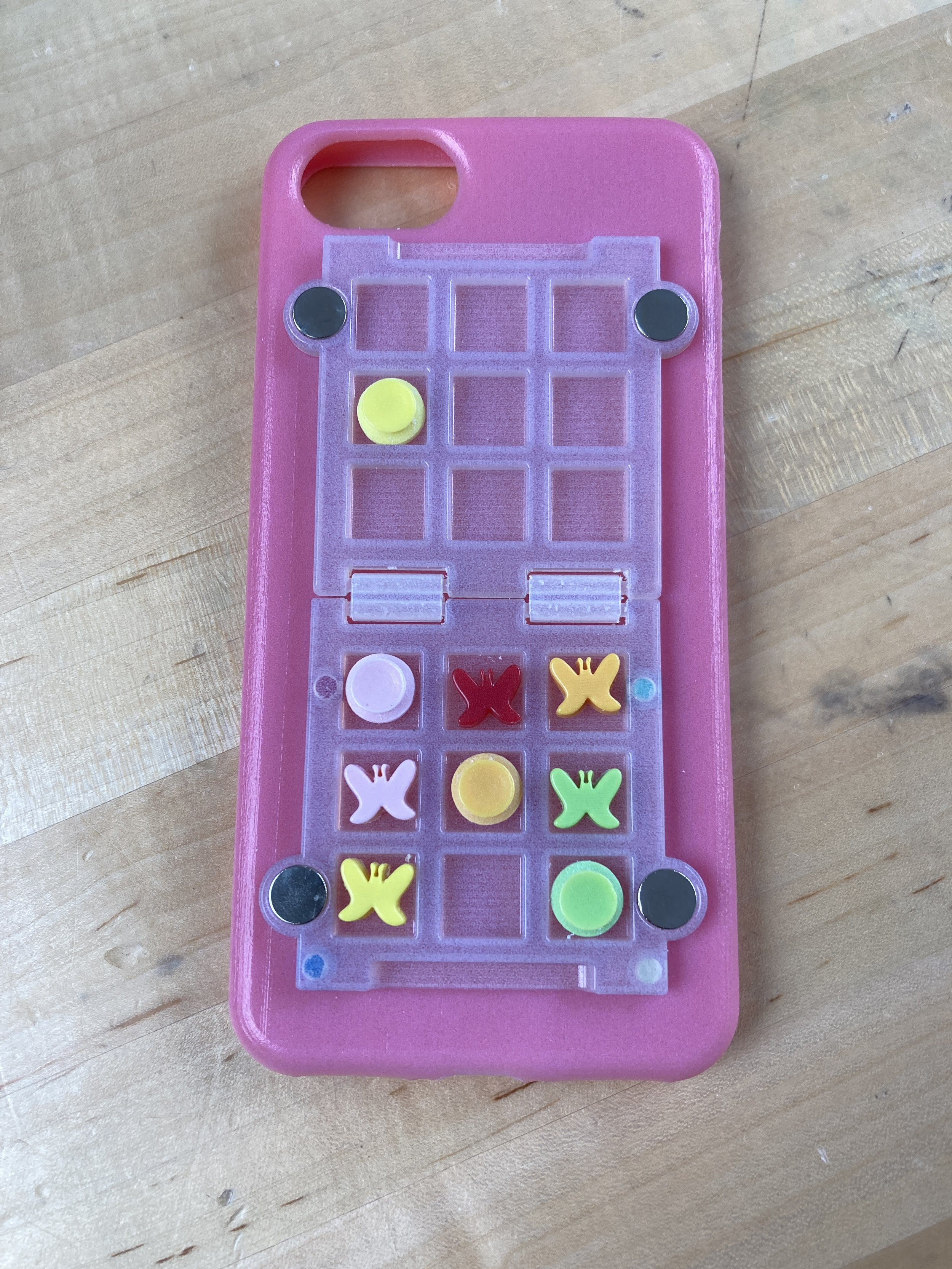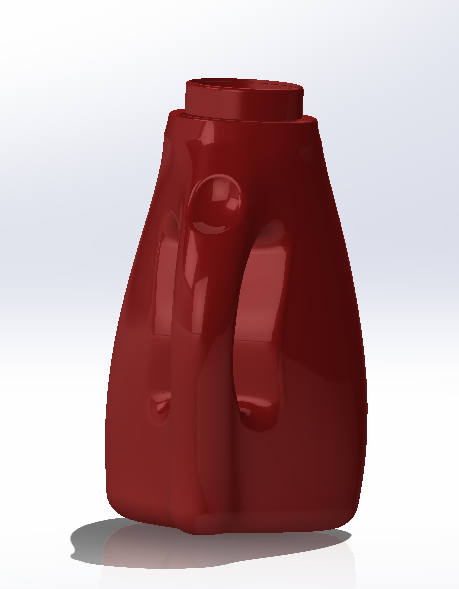Developing and communicating function (preliminary mockups)
Communicating design intent (sketching)
Communicating design details (CAD)
…was for my summer internship at the Segal Design Institute. My (insanely talented) team had the opportunity to design and build a puppet theater for the kids visiting their loved ones at the Cook County Department of Corrections. I was responsible for sewing all of the curtains to withstand constant use, and developing the pattern for a memory foam-wrapped mini puppet stage for kids to take to the visitation tables—a removable component that fit into the larger play station via press fit, so it had to be durable!
I ended up hand-stitching the blue leather coating for mini-puppet theater; in order to get the durability we needed for the piece and to navigate around its geometry, we opted to use leather thread. It was a challenging project for sure, involving many hours and lots of trial and error, but I’m so incredibly honored to have been a part of this project!
My favorite project so far…
Bringing two queueing interventions to life
My service design studio and I had the incredible opportunity to work with the Art Institute of Chicago on queueing interventions for one of their galleries, and at our midpoint presentation last quarter, we got feedback from our project partners that they would love to see more analog interventions from the team—a departure from where most of our mockups were heading at that point.
As one of the only members of the team with 3D printing and physical mockup building skills, my main contribution was to develop a few physical mockups to bring in for the team to interact with at our final presentation.
These included descriptions of the intended purpose of each of the interventions, how to measure their success at achieving these purposes, how to put each of them together, and tips on how to maintain them and what to do when the design “breaks.” I’ve given short descriptions of each below, as well as a photo diary showing the evolution of each design:
1) The process of creating art is such a physical, tactile and sensory process, but museumgoers can usually only interact with it visually. To speak to this observation, I designed a multisensory embossing station which the museum could 3D print and set up with minimal supplies, should they decide to test out different prompts and textures with visitors throughout the museum. This interactive station gives them an opportunity to connect with the artwork in a new way, and to feel more connected to the holistic art-making process. My teammate put together the content on the keepsake cards, and I got to develop the design of the cards and the embossing station!
2) Given that for some visitors, the readability of the didactics on the wall can be a barrier to engaging with that content, we wanted to bring the information up close and personal! As a result, we came up with a rotating trivia stanchion game to encourage connection between visitors who came together, and spark conversation between those who didn’t.
Each subsequent stanchion would have different content in the display panels at each step, essentially “following” the visitor as they move forward and keeping them engaged throughout the entire wait in line.
The display panels lower down on the “stanchions” are for kid-specific content, and are meant to hold “I spy“ and “Simon says” prompts specific to the gallery the line is stationed in. Ultimately, the goal is for these prompts to entertain them and get them engaged with their surroundings and their caregivers as they move throughout the line.
I developed some content for it to communicate our idea, based around an upcoming exhibit the AIC would be putting on, and went through some rapid iterations to get the panels on the “stanchions” to rotate.
































































































